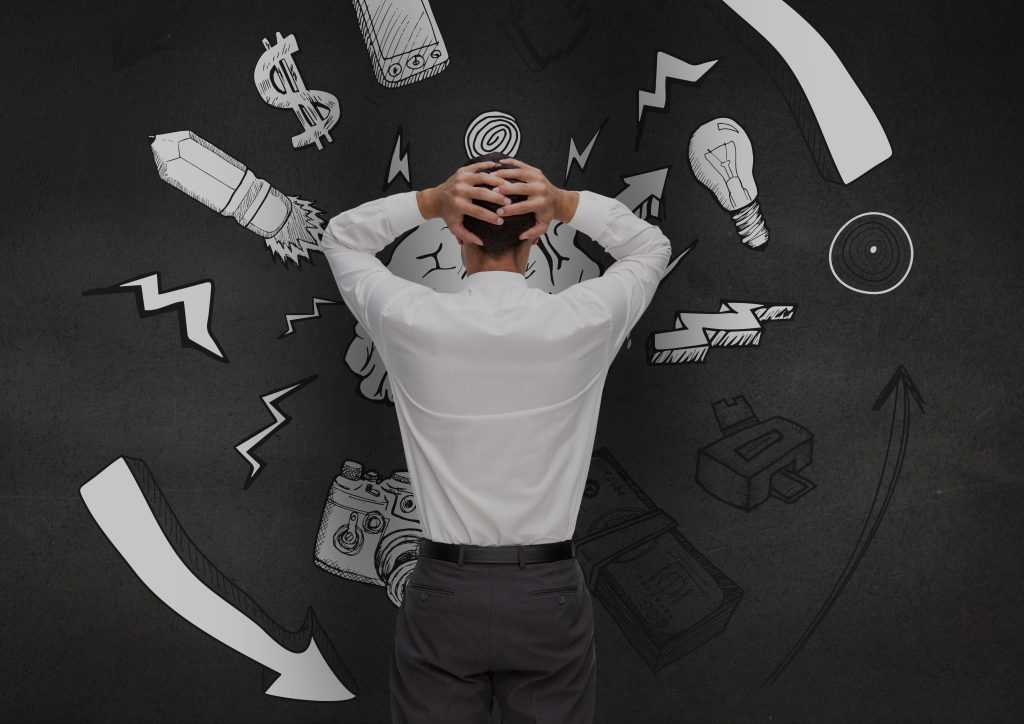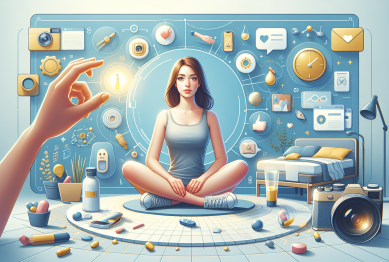In today’s fast-paced world, the idea of taking breaks—especially creative ones—may seem counterintuitive to achieving productivity. After all, we’re often encouraged to push harder, work longer, and avoid distractions in the pursuit of success. However, the tide is turning. More and more experts in wellness, psychology, and even business are recognizing that creative breaks are not just beneficial—they’re essential for maintaining long-term focus, mental health, and overall performance.
Creative breaks, unlike traditional “rest breaks,” engage your mind in ways that replenish both your creativity and productivity. The science supporting this idea is mounting, with research showing that taking breaks to engage in creative activities can enhance problem-solving skills, boost mood, and promote cognitive flexibility.
In this article, we’ll explore why creative breaks are more important than you might think and how they can contribute to your overall well-being and productivity.

What Are Creative Breaks?
A creative break involves stepping away from your regular work and engaging in activities that stimulate creativity, relaxation, or new ways of thinking. These activities might include:
-
Doodling or sketching
-
Going for a walk or spending time in nature
-
Writing in a journal
-
Listening to music
-
Meditating or doing breathing exercises
The key to a creative break is that it takes you out of your usual routine and encourages activities that refresh your mind. Unlike passive breaks (such as scrolling through social media), creative breaks demand active engagement and allow the brain to process information differently.
The Science Behind Innovation breaks
1. Boosting Cognitive Function
When you work continuously on the same task, your brain can enter a state of “mental fatigue,” which decreases your efficiency. Creative breaks give your brain a chance to reset and refresh. Research from the Journal of Applied Psychology has shown that taking regular breaks improves concentration and creativity in the long term.
When engaging in creative tasks, the brain taps into different areas responsible for abstract thinking and emotional regulation. This allows you to return to your original work with a fresh perspective and renewed focus.
2. Enhancing Problem-Solving Skills
One of the most powerful benefits of creative breaks is their ability to enhance problem-solving skills. Studies in cognitive psychology show that taking breaks—especially creative ones—helps to foster incubation. This is the process where the brain continues to work on problems subconsciously while you engage in unrelated activities.
For instance, the famous story of Archimedes’ “Eureka moment” (when he discovered the principle of buoyancy) highlights how stepping away from a challenge allowed for creative insight. Similarly, researchers at University College London found that when participants were allowed to take short breaks during tasks, their ability to come up with creative solutions improved significantly.
3. Reducing Stress and Preventing Burnout
One of the primary reasons creative breaks are so important is their ability to reduce stress. Prolonged periods of intense focus on demanding tasks can lead to burnout, making it harder to maintain high levels of productivity and creativity.
Taking creative breaks allows your brain to rest and recharge, which in turn can help you manage stress and maintain a positive outlook. Activities like journaling, mindfulness, and sketching are particularly effective because they engage the brain in a way that is relaxing yet stimulating, promoting a balanced state of mind.
How Innovation breaks Improve Well-being
Aside from boosting productivity, creative breaks play a significant role in improving emotional and mental well-being. Here’s how:
1. Encouraging Mindfulness
Mindfulness—the practice of staying present and fully engaged in the moment—is one of the most effective ways to reduce anxiety and stress. Creative breaks, especially those that involve mindful activities like journaling or walking in nature, help you tap into the present moment.
Research published in Psychological Science indicates that creative activities, such as painting or playing music, activate the same neural circuits as mindfulness exercises. This helps you feel more grounded and focused, promoting a sense of peace.
2. Improving Mental Flexibility
Mental flexibility—the ability to adapt to new information and change—is a critical skill in today’s world. Creative breaks allow you to step outside of your usual patterns, forcing your brain to think in new ways. Activities that engage different parts of the brain help improve cognitive flexibility and creativity, which can be applied to problem-solving both at work and in life.
For example, engaging in a hobby like knitting, painting, or learning a new musical instrument can improve cognitive function by forcing the brain to make new connections and patterns.
3. Rejuvenating Relationships
Many people think that breaks are solely about personal productivity, but they can also improve your relationships. Taking a creative break, especially with others, can foster connection. Collaborative activities like brainstorming, cooking, or even working on a creative project together allow you to bond with others while simultaneously relieving stress and improving your mood.
The Benefits of Innovation breaks for Work Productivity
1. Sustained Focus Over Long Periods
It’s hard to focus for long periods without a break. Studies have shown that the brain works best in short bursts, with regular breaks preventing mental exhaustion. According to research from Duke University, creative breaks allow you to sustain concentration and productivity for much longer than if you work without interruption.
Instead of feeling like you have to “power through,” integrating creative breaks into your schedule will help you stay engaged with your tasks for a longer period, without the typical burnout.
2. Encouraging Innovation
Innovation often comes when you least expect it—during a moment of relaxation or when you step away from a project. Creative breaks encourage new ways of thinking and open the door to fresh ideas. In fact, some of the world’s most creative breakthroughs have occurred during “off” times—think of the discovery of penicillin by Alexander Fleming or the invention of the lightbulb by Thomas Edison.
Creative breaks provide your mind with space to wander, which is when innovative ideas often emerge.
3. Improving Memory and Learning
Taking breaks, especially creative ones, can also improve memory consolidation. During a break, your brain processes information more effectively, storing important details and insights into long-term memory. In a study published in the Journal of Experimental Psychology, participants who took creative breaks between learning tasks demonstrated better retention than those who didn’t take breaks.
Practical Tips for Taking Effective Creative Breaks
If you’re ready to integrate creative breaks into your daily routine, here are some practical tips:
-
Schedule Breaks Regularly
Don’t wait until you’re burnt out. Schedule creative breaks throughout your day to ensure they become a regular part of your routine. -
Find Activities You Enjoy
Creative breaks should involve something you truly enjoy. Whether it’s drawing, playing music, or gardening, find an activity that helps you relax and re-engage with your creative self. -
Use Technology to Your Advantage
Apps like Headspace for mindfulness or Pinterest for creative inspiration can help guide your breaks, making them even more productive. -
Step Outside
Nature has a profound impact on creativity and well-being. Whenever possible, take your breaks outdoors. Whether it’s a walk or just sitting in a park, the change of scenery will help refresh your mind.
Conclusion
Innovation breaks are more than just a luxury—they’re a necessity in today’s fast-paced world. They help to improve cognitive function, reduce stress, and boost productivity, while fostering innovation and well-being. Whether you’re looking to enhance your performance at work, learn something new, or simply relax, taking regular creative breaks can make a profound difference in your life.
As technology and science continue to emphasize the importance of mental health and balance, creative breaks are emerging as a vital part of a healthy, productive lifestyle. So, the next time you feel the pressure to keep going without rest, remember that taking a step back to engage in something creative can be the most powerful move you make.
References:
- Baird, A., Smallwood, J., & Schooler, J. W. (2011). Mind wandering and the brain. Psychological Science. https://journals.sagepub.com
- Zatorre, R. J., & Salimpoor, V. N. (2013). From perception to pleasure: Music and its neural substrates. Proceedings of the National Academy of Sciences. https://www.researchgate.net
- Goetz, T., & Hall, A. (2019). The Cognitive Benefits of Breaks in Creative Work. Journal of Experimental Psychology. https://www.apa.org









